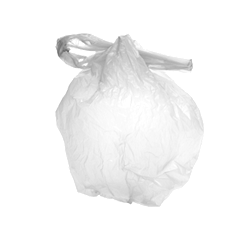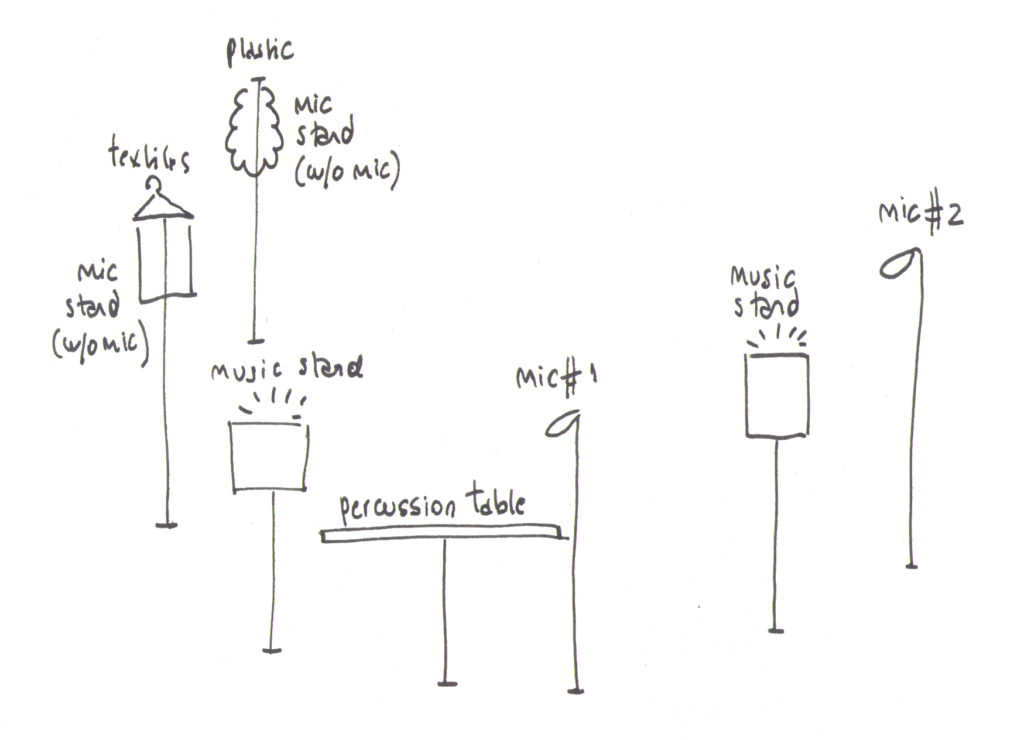El libro de los gestos / The book of gestures (2007 revised 2008)
Notes for performance
Four musicians in a room play music. Each one has a lamp. Besides the music, the performers “play” the lights on and off during the piece creating different scenes. The space of the stage is always changing because of the lights. This music suggests a counterpoint of different layers: the rhythm of the music, the rhythm of the lights, the rhythm of the room: spaces to be seen, spaces to be heard, spaces to be imagined. Some music is played in the light, but also there is other music coming from the dark in a room full of presences.
This music suggests a counterpoint of different layers: the rhythm of the music, the rhythm of the lights, the rhythm of the room…
There are spaces to be seen, spaces to be heard, spaces to be imagined. Some music is played in the light, but also there is other music coming from the dark in a room full of presences.
The musicians are switching ON and OFF the stand lights creating different scenes on stage. Some actions happen in the dark and should be played by heart following other musicians’ cues.
1. Violin:
1. The IV string is a 5th lower. It is easier bowing the string lowering the II string with the left hand. Sul tastissimo means exagerated sul tasto. The sound is rather opaque, very dumped.
2. m16. Turn light ON and m.17 OFF. This cue you should be learned by heart following the violoncello. It would be nice if you are familiar with his/her part. Once your light ON. don’t look at her, look at your score.
3. m. 105 glissando in the dark. It is in the IV string, starting very high and ending in the violoncello note unisono (real sound and not effect). You should check the starting point (with percussion) and ending point (with violoncello) with your ear. You are playing in the dark.
4. m196 pop bubble wrap. It is better if you leave the instrument aside in a safe place, (on a pillow) and pop the bubble wrap, casually, with both hands.
2. Cello:
The I string is a 5th lower. It is easier bowing the string lowering the II string with the left hand. Sul tastissimo means exaggerated sul tasto. The sound is rather opaque, dumped.
2. The beginning of the piece is a long solo for the cello. The cello is illuminated and the rest of the instruments are playing background things in the dark. In fact the cello plays almost the same melody repeated many times but slightly varied. In every repetition the melody becomes a little bit longer. This sections should be extremely cantabile, but NO VIBRATO at all.
3. Turning the pages in mm.4 and mm.8 should repeat the exact gesture the two times. Not very theatrical but a very clear action and rather exaggerated.
4. mm.177 whistling inside the instrument throughout the sound holes. There is a picture in the score that may be useful. The singing inside the cello works better than the whistling.
Please, memorize when you will have to turn your light ON, because being in the dark (OFF) won’t allow you to follow the score. Get familiar with the other instruments actions.
Light ON:
1. Measure 77 after violin motive
2. Measure 112, after the pianist turn three consecutive times the page.
3. Percussion:
Instruments: You have two spots on stage. One with all the instruments and the stand light, the second towards the front with only a flash light, a cowbell without stand and a timpani mallet. All the mallets in this piece are just 2 timpani mallets. The lion’s roar should have a 3 meters string.
There is a motive mm. 49/51 exactly repeated in 103/105. The second time is in the dark, so you should memorize it (it is very easy and short).
In mm.100 also you have 4 beats in the dark. Take the cue from piano breathing in mm.99. It is better if the piano is not making a cue gesture because it is anticipating the surprise.
mm.121 on, the lion’s roar has a kind of solo. The instrument seems “like talking in an incomprehensive language”. Should be expressive.
mm.134 errata. There is a missing 16th rest at the end of the measure.
The second spot on stage could be a little carpet on the floor, very intimate and casual setup.
Please, remember when you will have to turn your light ON, because being in the dark (OFF) won’t allow you to follow the score. Get familiar with the other instruments actions.
Light ON:
Measure 43 after long cello solo, and second long voice glissando.
Measure 112, after the pianist turn three consecutive times the page and cello turn her light ON.
El libro de los gestos / The book of gestures (2007 revised 2008)
Notes for performance
Four musicians in a room play music. Each one has a lamp. Besides the music, the performers “play” the lights on and off during the piece creating different scenes. The space of the stage is always changing because of the lights. This music suggests a counterpoint of different layers: the rhythm of the music, the rhythm of the lights, the rhythm of the room: spaces to be seen, spaces to be heard, spaces to be imagined. Some music is played in the light, but also there is other music coming from the dark in a room full of presences.
This music suggests a counterpoint of different layers: the rhythm of the music, the rhythm of the lights, the rhythm of the room…
There are spaces to be seen, spaces to be heard, spaces to be imagined. Some music is played in the light, but also there is other music coming from the dark in a room full of presences.
The musicians are switching ON and OFF the stand lights creating different scenes on stage. Some actions happen in the dark and should be played by heart following other musicians’ cues.
1. Violin:
1. The IV string is a 5th lower. It is easier bowing the string lowering the II string with the left hand. Sul tastissimo means exagerated sul tasto. The sound is rather opaque, very dumped.
2. m16. Turn light ON and m.17 OFF. This cue you should be learned by heart following the violoncello. It would be nice if you are familiar with his/her part. Once your light ON. don’t look at her, look at your score.
3. m. 105 glissando in the dark. It is in the IV string, starting very high and ending in the violoncello note unisono (real sound and not effect). You should check the starting point (with percussion) and ending point (with violoncello) with your ear. You are playing in the dark.
4. m196 pop bubble wrap. It is better if you leave the instrument aside in a safe place, (on a pillow) and pop the bubble wrap, casually, with both hands.
2. Cello:
The I string is a 5th lower. It is easier bowing the string lowering the II string with the left hand. Sul tastissimo means exaggerated sul tasto. The sound is rather opaque, dumped.
2. The beginning of the piece is a long solo for the cello. The cello is illuminated and the rest of the instruments are playing background things in the dark. In fact the cello plays almost the same melody repeated many times but slightly varied. In every repetition the melody becomes a little bit longer. This sections should be extremely cantabile, but NO VIBRATO at all.
3. Turning the pages in mm.4 and mm.8 should repeat the exact gesture the two times. Not very theatrical but a very clear action and rather exaggerated.
4. mm.177 whistling inside the instrument throughout the sound holes. There is a picture in the score that may be useful. The singing inside the cello works better than the whistling.
Please, memorize when you will have to turn your light ON, because being in the dark (OFF) won’t allow you to follow the score. Get familiar with the other instruments actions.
Light ON:
1. Measure 77 after violin motive
2. Measure 112, after the pianist turn three consecutive times the page.
3. Percussion:
Instruments: You have two spots on stage. One with all the instruments and the stand light, the second towards the front with only a flash light, a cowbell without stand and a timpani mallet. All the mallets in this piece are just 2 timpani mallets. The lion’s roar should have a 3 meters string.
There is a motive mm. 49/51 exactly repeated in 103/105. The second time is in the dark, so you should memorize it (it is very easy and short).
In mm.100 also you have 4 beats in the dark. Take the cue from piano breathing in mm.99. It is better if the piano is not making a cue gesture because it is anticipating the surprise.
mm.121 on, the lion’s roar has a kind of solo. The instrument seems “like talking in an incomprehensive language”. Should be expressive.
mm.134 errata. There is a missing 16th rest at the end of the measure.
The second spot on stage could be a little carpet on the floor, very intimate and casual setup.
Please, remember when you will have to turn your light ON, because being in the dark (OFF) won’t allow you to follow the score. Get familiar with the other instruments actions.
Light ON:
Measure 43 after long cello solo, and second long voice glissando.
Measure 112, after the pianist turn three consecutive times the page and cello turn her light ON.

